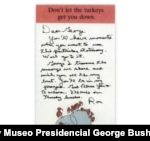( Business) — All stores have marketing tactics to get you in: fancy mannequins, elaborate window displays, billboards that scream about all the discounts you can find inside.
But some are much more subtle, so much so that you’ve probably hardly ever noticed them. Imagine your local supermarket, for example. What do you see when you first enter? Most likely: Flowers.
Big, bright bouquets of fresh-cut flowers welcome shoppers inside nearly every major grocery store, from Whole Foods to Kroger to countless New York City bodegas.
It is not a coincidence: there is a strategic decision behind the placement of those flowers.
“It’s very, very simple,” says Paco Underhill, founder and CEO of behavioral research and consulting firm Envirosell. “If you can get someone’s nose and salivary glands working, they become a lot less disciplined buyers.”
That’s right: flowers awaken the senses and prepare you to spend. Sure, they’re aesthetically pleasing. And as you get closer, your nose picks up its scent, which tells your brain “this place has good stuff.”
“You’re pointing to freshness, you’re pointing to ‘natural’ … all the good things that make food good,” said Ashwali Monga, a professor of marketing at the Rutgers School of Business.
“If I’m a grocery store, this is how I want you to see my store: Logistically, if this person can manage fresh flowers and sell them, this person will not sell stale food.”
That psychological preparation is just one of the ways stores indirectly influence your behavior and encourage you to more easily part with your money. (Christmas music is another effective strategy.)
Psychologists call this effect misattribution: For example, you’re in a good mood and ready to pay for the holiday season, not fully realizing it’s because of the music and twinkling lights.
What makes flowers so effective is that they are a high-margin item. They may represent only 1% to 3% of total sales, but in 2019 stores reported an average gross margin of 47% on cut flowers, according to a report from the International Fresh Produce Association. In other words, that $15 bouquet you bought probably only cost the store $7.50.
That’s because most of the stalks for sale in US grocery stores are flown in from South America, where land and labor are much cheaper.
The grocery store flower scene has emerged in the last 30 years, says Becky Roberts, director of flowers for the IFPA. As shoppers became increasingly time-hungry, grocery stores evolved to become more of a one-stop shop, complete with bank branches, coffee shops, post offices and, of course, florists.
The COVID-19 restrictions have been especially lucrative for the cut flower industry.
“People had to come to supermarkets as one of the few places where they could actually come and shop,” Roberts said. “They wanted things that could bring them a little bit of joy, a little bit of fun, a little bit of happiness.”
Inflation is taking its toll, of course, but Roberts said he expects flower sales to remain strong even as consumers rein in spending on non-essential items.
“You may not be able to afford a $200 dinner right now, or you may not be able to take that road trip,” he said. “But you can still go pick a bouquet and feel like, ‘Okay, I’m still treating myself.'”












Add Comment